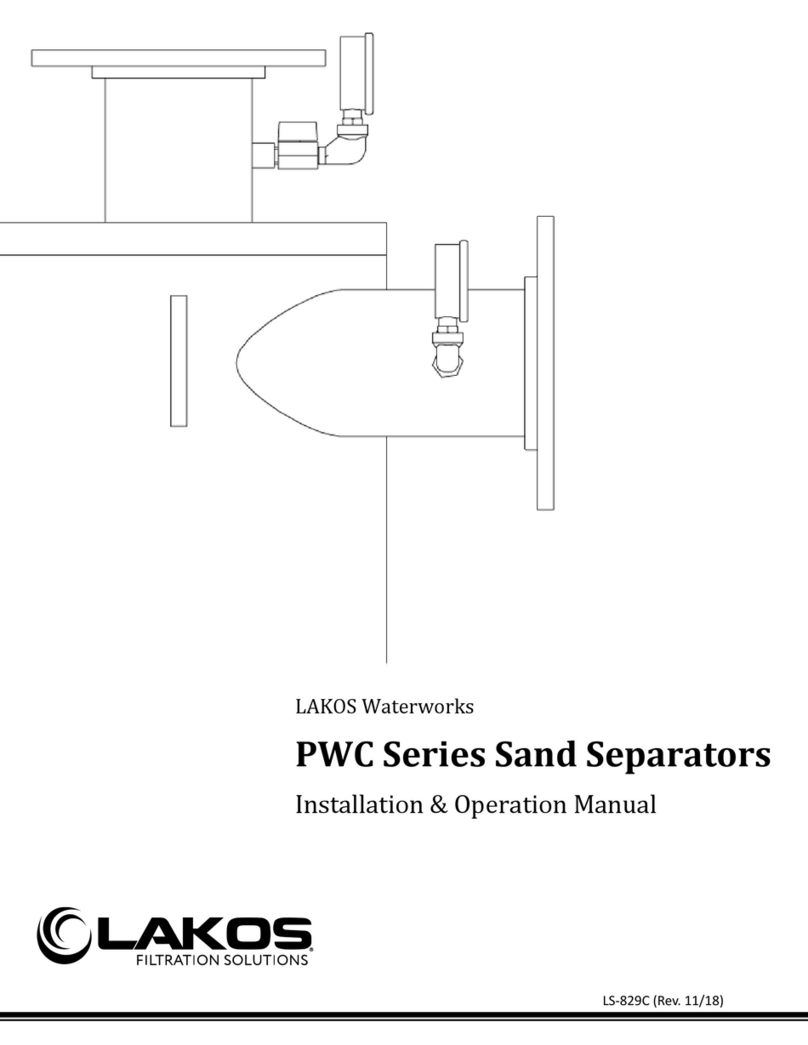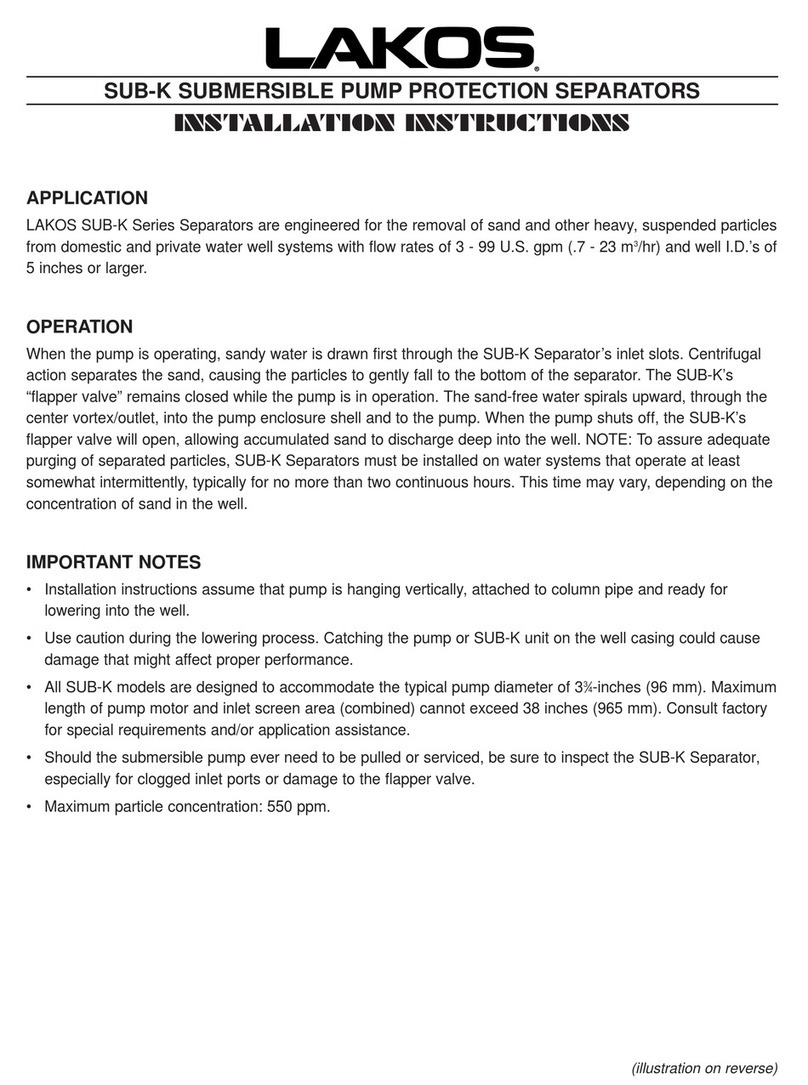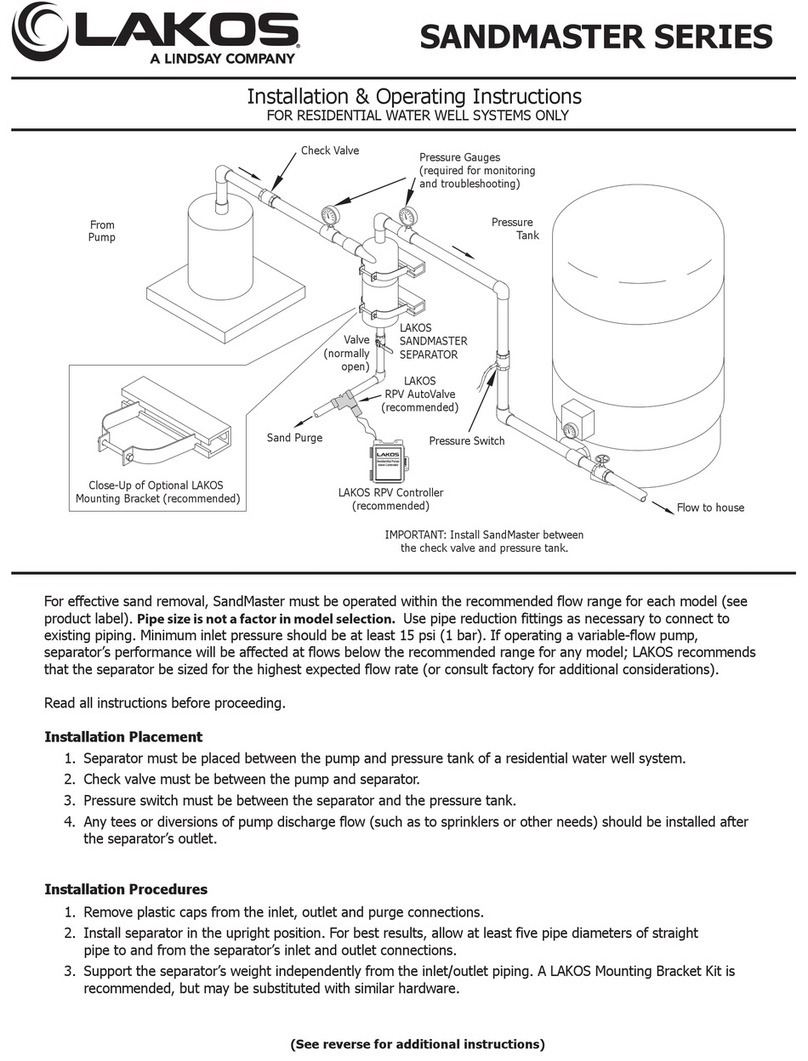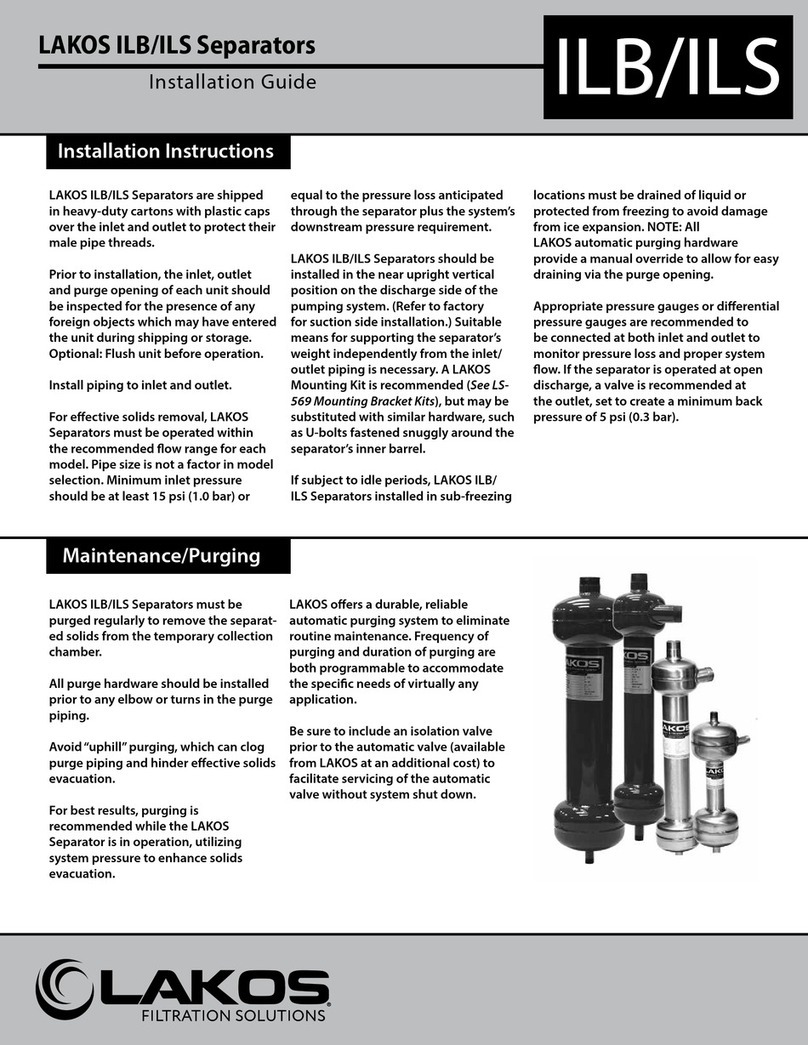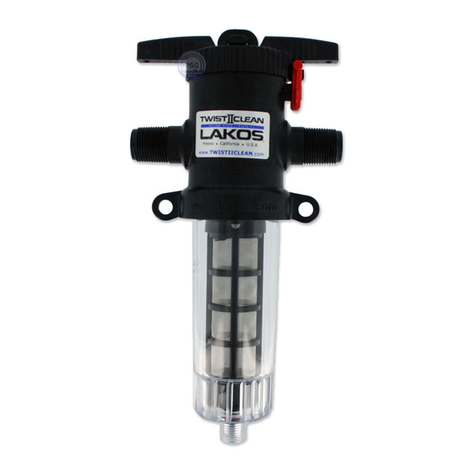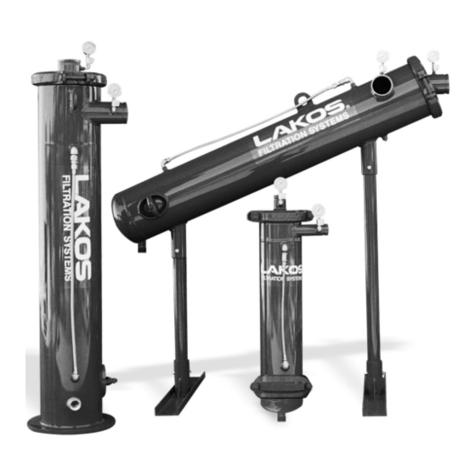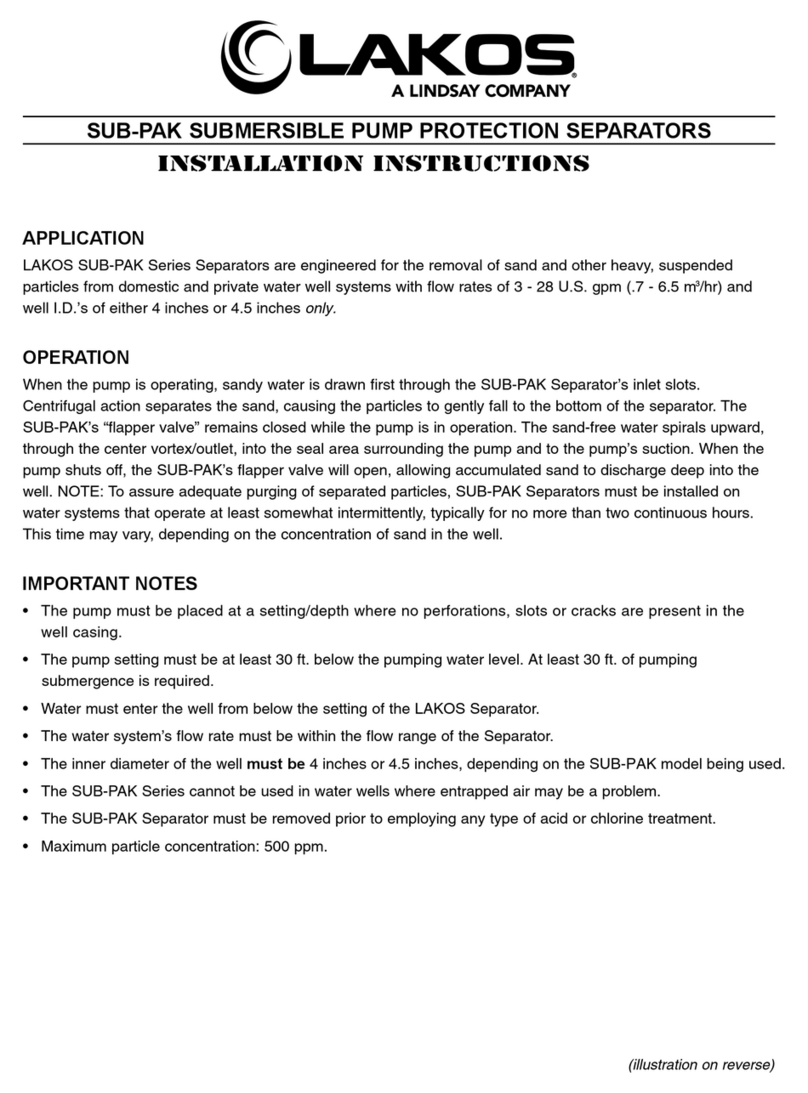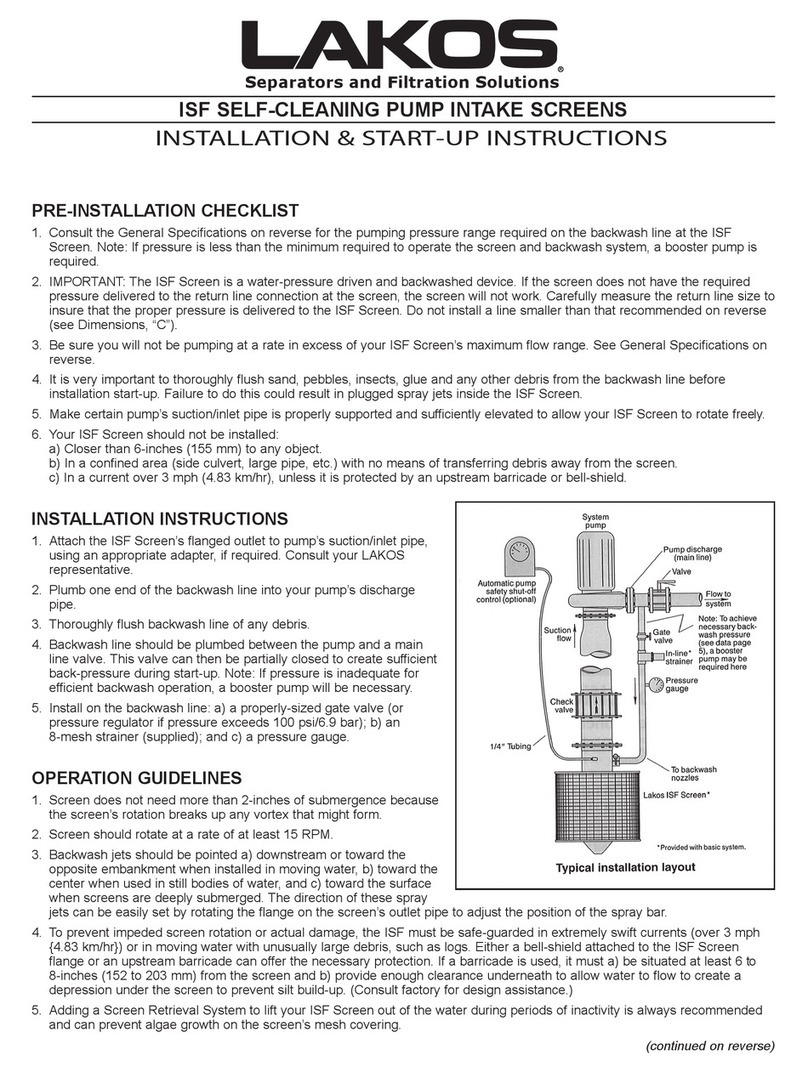
II. WARRANTY
All products manufactured and marketed by this corporation are warranted to be
free of defects in material and workmanship for a period of at least one-year from
the date of delivery. Extended warranty or no coverage applies as follows:
**All LAKOS separators---five year warranty
**Pump seals are not covered under warranty
All other components and coatings: 12 months from the date of installation; if
installed 6 month or more after ship date, warranty shall be a maximum of 18
months from ship date.
If a fault develops, notify us or your local representative, giving a complete
description of the alleged malfunction. Include the model numbers(s), date of
delivery and operating conditions of subject products(s). We will subsequently
review this information and, at our option, supply you with either servicing data or
shipping instructions with returned materials authorization number. Upon prepaid
receipt of subject product(s) at the instructed destination, we will perform such
necessary product repairs or replace such product(s) at our expense.
This limited warranty does not cover any products, damages or injuries resulting
from misuse, misapplication, neglect, normal expected wear, chemically-caused
corrosion, improper installation or operation contrary to factory recommendation.
Nor does it cover equipment that has been modified, tampered with or altered
without authorization.
No other extended liabilities are stated or implied and this warranty in no event
covers incidental or consequential damages, injuries or cost resulting from any such
defective products(s).
This warranty supersedes any and all previous warranties provided by LAKOS
Filtration Solutions.
III. DELIVERY INSPECTION OF STS SERIES MEDIA FILTERS
1. Immediately inspect the system upon arrival for any damage that may have
occurred during shipping. Look for crate damage, pierced or torn boxes or
any other signs of handling, which may suggest damage to the system.
2. LAKOS STS Series Media Filters are shipped with all major components
assembled onto the skid. Selected small items, such as the pressure
gauges, may be removed and inserted into the control box for shipping.
3












